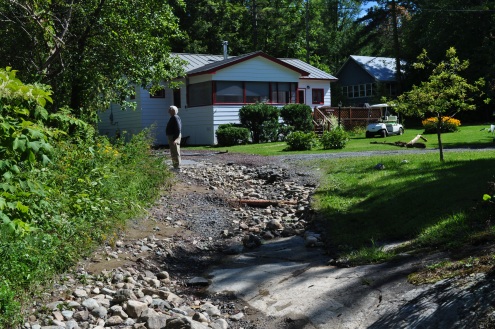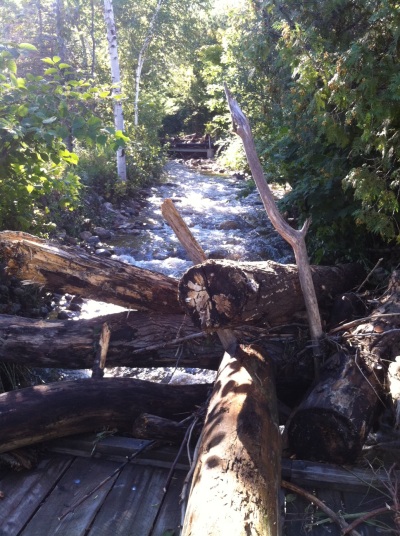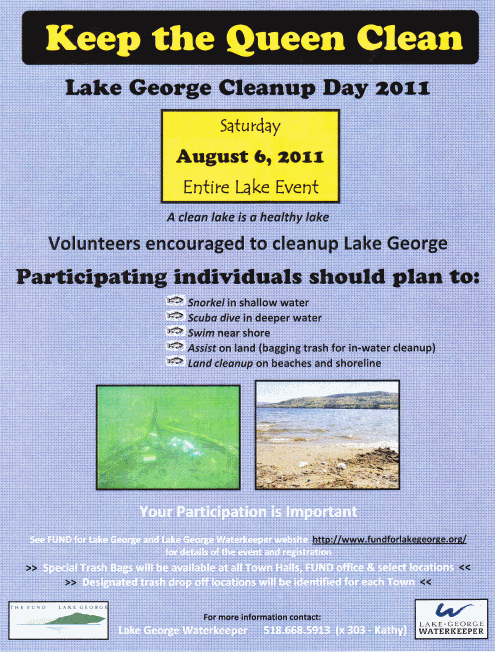
Walt Lender, executive director of the LGA, comments at a public hearing before the Warren County Board of Supervisors, about the new invasive species transport law they recently passed. The LGA provided information to the supervisors which led to the drafting of the new law. The county law is based on a law that is still pending at the state level.
The Warren County Board of Supervisors voted almost unanimously to pass an invasive species transport law on Friday September 16th after a public hearing about the law.
“The LGA has been working for weeks with the supervisors to help draft this law, which is based on a law that is still pending at the state level,” said Lake George Association Executive Director Walt Lender. “This groundbreaking law will help us tremendously in our efforts to fight invasive species on the Lake. The LGA plans to be instrumental in teaching people about the law, and in helping area business owners explain the law to visitors next summer,” he said.
The law will make the introduction and transport of aquatic invasive species into Warren County waterbodies illegal. It is the first county law of its kind to pass in New York State. “Several towns have passed similar laws, including Lake Pleasant and the village of Lake Placid, but county and statewide efforts are really needed, otherwise controlling the spread of invasive species is too piecemeal,” said Emily DeBolt, LGA director of education.
“With this law in place more people will pay closer attention to the issue of invasives on Lake George, and we hope the leadership and initiative that the supervisors have shown in passing this ground-breaking law will soon be duplicated in other counties and at the state level,” Lender said. “Our lake stewards and staff have spent hours actively fighting the Asian clam this summer — erecting signage, producing and distributing brochures, securing mats with sandbags, and most recently, surveying the lake for additional sites. It makes little sense for the LGA, and for other organizations, to spend tens of thousands of dollars removing invasives from Lake George when people can legally re-introduce them,” he continued.
“The LGA is particularly grateful to the Warren County Board of Supervisors and its legislative committee chaired by Supervisor Bentley. They clearly see how important this action is for the Lake,” Lender said.
For decades, the LGA has been educating people about invasive species and the threats they pose to Lake George, both environmentally and economically. LGA Lake Stewards inspect boats at area launches, removing specimens of invasives prior to launch, and educating boaters. “Since starting the Lake Steward program in 2008, we have seen over 16,000 boats and have removed 270 specimens of invasive species,” said Emily DeBolt, LGA director of education. “The vast majority of boaters want to do the right thing, and certainly don’t intend the Lake any harm. Laws like this will help us tremendously in communicating the seriousness of the threat,” she said.
One of the reasons a law like this is so important is because Lake George is surrounded by water bodies that have invasive species, and LGA’s lake steward data shows how frequently boaters come to Lake George from these infested waters. The Great Lakes have 184 invasive species. The St. Lawrence River has 87. Lake Champlain has 49. The Hudson River has 91. Lake George has only the four: the Asian clam, Eurasian watermilfoil, Zebra mussel, and curly-leaf pondweed.








